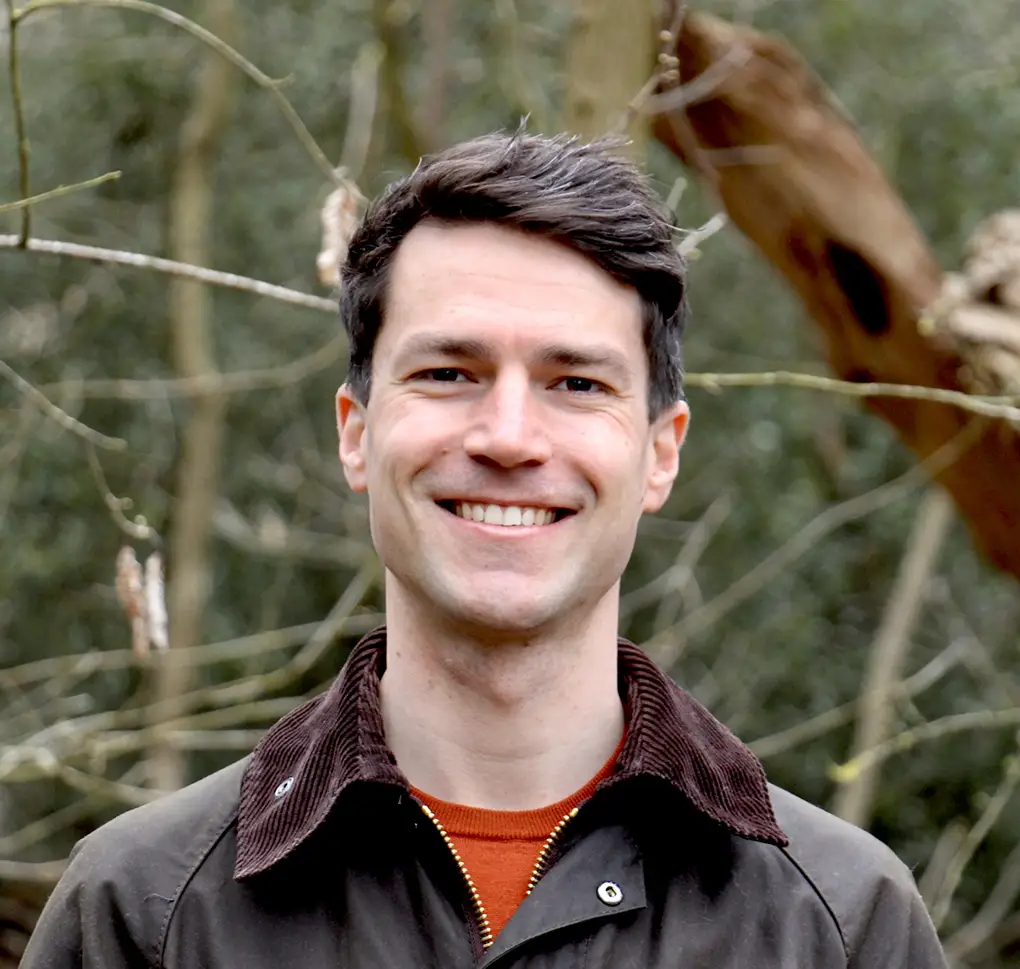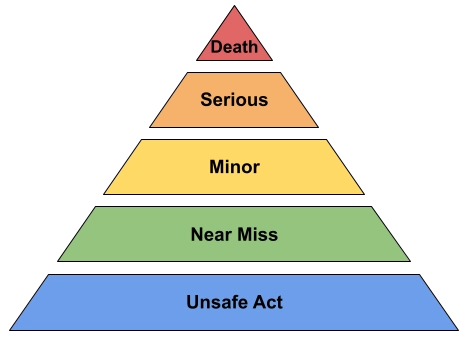HOW TO CREATE A POSITIVE CULTURE OF SAFETY
IT STARTS WITH YOU
FEBRUARY 21, 2023

Written by Rich Evans, Director of Health, Safety and Security, AHAH Rich Evans has been the Director of Health, Safety and Security at All Hands And Hearts (AHAH) since 2021. He brings to the role extensive experience in security analysis and occupational health and safety across global operations. The safety and wellbeing of our volunteers, staff, partners and the community members we work alongside comes first at All Hands and Hearts. We are committed to creating a safe and supportive environment across all programs.
WHAT IS A CULTURE OF SAFETY IN THE WORKPLACE?
First, the boring bit, as we look to explain what this term means. The simplest way to think about this is by considering what values and beliefs are consciously or subconsciously shared by people across your organization regarding health and safety.
Remember, a culture of safety can be positive or negative regarding these values. For example, an organization where the senior management leads by example in developing and adhering to a health and safety policy will almost certainly begin to build a positive safety culture in their employees. On the other hand, consider an organization where safety is never spoken about – this attitude towards safety is in itself a shared organizational approach that would certainly be classed as a negative culture of safety.
WHY IS IT IMPORTANT TO HAVE A POSITIVE CULTURE OF SAFETY IN THE WORKPLACE?
Imagine you’ve just jumped out of a plane. Will you deploy your parachute immediately or enjoy the free-fall? If you wait until the last moment to release your parachute, time passes a lot more quickly. You might be more stressed, miss smaller details and will have less control over the end result of where you land. If you open your parachute immediately, you have extra time to react, make decisions, be less stressed and will float gently back to earth.
A positive culture of safety is your parachute.
In an organization with a positive safety culture, everyone works together to drive improvement and learn from incidents. This gives you the time to act on warning signs that have been reported rather than free-falling towards an inevitable major incident that might be the first report you hear. Without a proactive approach towards safety, everyone is playing the waiting game and hoping that it won’t be them that gets hurt as the organization free-falls.
Another way we can demonstrate this is by using the Safety Triangle. As you can see, for every fatality, there were many more unsafe acts and near misses that we could have learned from. If you can open the parachute early, you are more likely to be able to prevent a more serious incident from occurring.

WHAT DOES A CULTURE OF SAFETY MEAN TO AHAH?
The environments in which AHAH work are broad, ranging from communities affected by tornados and hurricanes to supporting displaced refugees. As a result, the risks and challenges are equally extensive, highlighting the immense importance of instilling a positive safety culture from the start.
Furthermore, our model of harnessing the power of a volunteer workforce could be considered an additional risk in these contexts. However, by utilizing this standard, each individual knows that they have the ability to raise concerns and pause operations if they see a concern. If AHAH did not promote a “Safety First” culture, those unsafe acts and near misses could get overlooked and a more serious incident is likely to occur.
We have a responsibility to the communities we support to do no harm and leave the area with resilience for the coming years. Therefore, each person has a responsibility not only to each other, but also to every community member they may interact with or who may use the end products of our work in future.
It’s important to note, continuous learning is essential, and, AHAH is always seeking to learn more and improve. A safety culture is never ‘finished’ – losing our focus on safety is when complacency sets in and incidents occur.
HOW DOES AHAH PROMOTE, CREATE AND SUSTAIN A POSITIVE SAFETY CULTURE AND HOW CAN YOU DO IT TOO?
Creating a positive safety culture is not an immediate fix. It takes commitment and time, but the following key points are what form the core of AHAH’s safety culture.
1. SAFETY IS EVERYONE’S RESPONSIBILITY
AHAH staff and volunteers are constantly reminded that if they see something that doesn’t look right, they should report it immediately. It is important not to assume that someone else has seen it – even if they have, if they haven’t reported it, then they are breaching their responsibility to you and the rest of the team by ignoring it.
Remember, “the standards you walk past are the standards you accept”. Turning a blind eye to unsafe practices implicitly indicates that what you have seen is acceptable. This is a slippery slope and will very quickly lead to a negative safety culture.
Regardless of seniority or employment status, everyone is empowered to stop work – nobody will be blamed or criticized for taking precautions. In fact, the opposite is true – erring on the side of caution is proactively encouraged at AHAH and there will never be repercussions for doing so.
2. LEAD BY EXAMPLE
It is vital that those in management positions are seen to uphold the highest safety standards. Additionally, any promises or pledges by senior leadership must be followed through.
For example, if the leadership communicates the right things about safety being a top priority but then prioritizes others such as production, sales or cost-saving measures, then employees will quickly figure out that they are just being paid lip service and their own standards will slip. Furthermore, a resulting serious incident will almost certainly cost the organization a lot more money than those cost-saving measures saved in the first place!
3. TIMELY AND ACCURATE REPORTING
We’ve already spoken about the Safety Triangle and how a failure to report incidents on the minor end of the scale will only increase the likelihood of a more serious incident occurring. It is vitally important that everyone is proactively reporting incidents, even if it seems irrelevant or a tiny detail.
Don’t make the mistake that some organizations do of incentivising lower reporting numbers – the misconception is that doing so motivates people to work safely and therefore reduces the number of reports. In reality, if it is in an employee’s interest to hide an incident, then they probably will! People shouldn’t feel like they will punished unless serious negligence has occurred. Their insight about how an incident happened is valuable information that will help prevent a recurrence.
Even if you don’t make this mistake, don’t fall into the trap of thinking that a lack of incident reports means everything is going great. It is far more likely that complacency is setting in and small things are being missed. This is a dangerous precursor to a more serious incident. Remember to use your safety culture as your parachute! There is always room for improvement and the drive to find it is what fosters this worthwhile approach.
4. TRAINING, REPITITION AND PRACTICE
As well as standard safety training, in the disaster-affected environments in which we work there are many additional risks that could cause harm to our teams.
In order to prepare our teams for every eventuality, they will create and maintain emergency response contingency plans that can be activated in particular scenarios. However, an emergency is stressful, so that plan doesn’t just sit in a cupboard gathering dust. We practice, practice, practice! Everyone knows their role and they are then able to do their job in a stressful situation to the best of their ability.
This focus on preparation also applies to all things health and safety, from risk assessments, safety training, method statements and so on. They are reviewed and repeated by each team until everyone knows them. Everyone also has access to important resources, both physically and digitally.
5. FLEXIBILITY AND PRAGMATISM
In the variety of environments AHAH works, there is an inevitable need for flexibility to find solutions that work in that context. Equally, being pragmatic is to accept that sometimes the perfect answer on paper is just not going to work!
Whilst this sometimes provokes additional challenges, it also cultivates new and thought provoking ways to solve issues. AHAH harnesses this challenge and uses safety discussions to increase participation and empower the teams to find inventive solutions that meet the necessary regulations and safety standards. A lack of flexibility in such situations can end up causing more harm than good, hindering the progress of the team. If you are in a safety role in your organization, work to ensure that you are enhancing the impact of the team through your influence, rather than preventing them from being able to do their own jobs.












